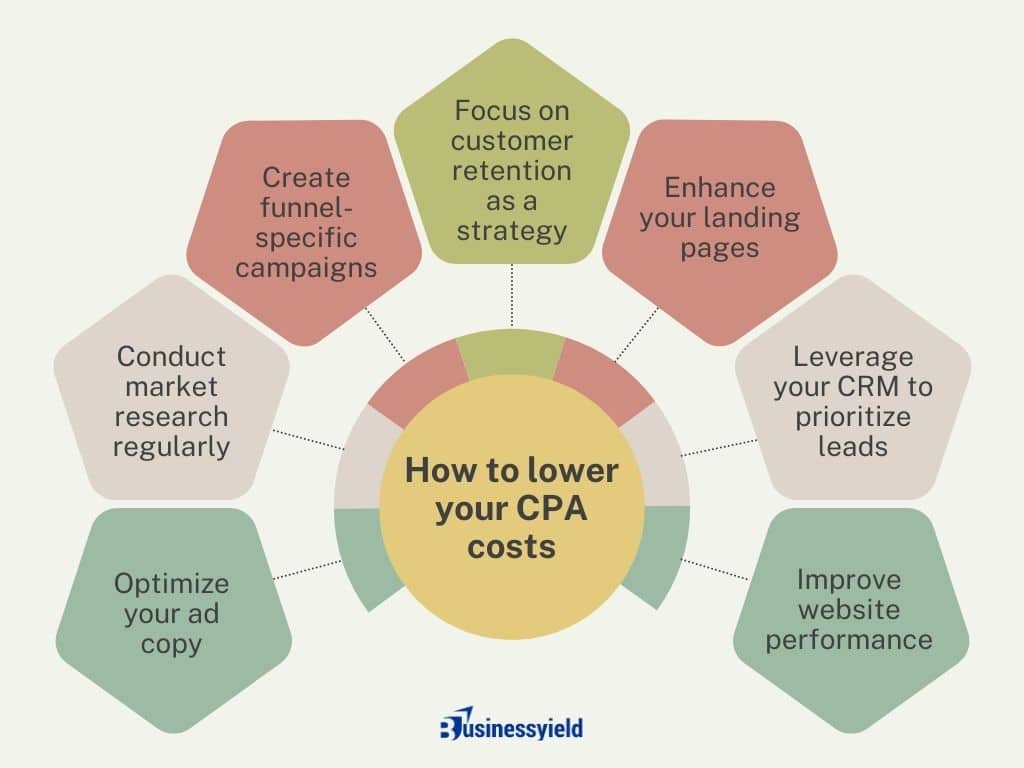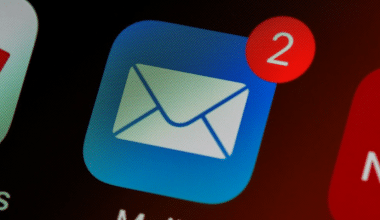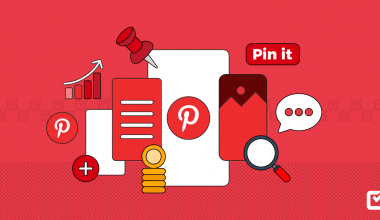How do you measure your content’s converting capabilities? How do you analyze how engaging and emotionally resonant your content is? The answer is cost per acquisition.
Clicks are important in the paid acquisition world. They tell you how many people have seen your content, and help you to adjust your marketing strategies as needed. However, that’s just about all what clicks do. If you want to know whether your product is good enough to persuade your audience to stay and, ultimately, buy your product or service, you should pay attention to cost per acquisition.
In a nutshell, it’s the total sales and marketing money you spend to acquire or instigate a lead to perform an action.
Key Points
- Cost Per Acquisition, or “CPA,” is a marketing metric that measures the total cost to acquire one paying customer.
- CPA is calculated by dividing your total costs (marketing costs) spent by the number of new customers in the same time period.
- CPA is one of the key metrics for determining marketing success and should not be confused with the customer acquisition cost (CAC).
- CPA directly measures the revenue generated by your marketing campaign, which is why it is important to measure it.
Understanding cost per acquisition
Cost Per Acquisition, or “CPA,” is a marketing metric that measures the total cost to acquire one paying customer. It must include the cost of marketing campaigns or other spending to get a new customer. This metric is usually calculated alongside the average customer lifetime value (LTV), return on investment or cost per action.
These three combined will let you know how well you’re doing with your marketing budget. This can also help you with various business decision-making.
In marketing, cost per acquisition (CPA) measures the aggregate cost of converting a lead as part of a marketing campaign. Some businesses define an acquisition as a literal sale, while some employ a looser meaning to include affirmative engagement metrics, like clicks and newsletter subscriptions.
SEE: Marketing Campaign: Definition, Types & Strategies
Many marketing metrics are indicators of success, such as conversion rate and visits (or “sessions”). Cost Per Acquisition, on the other hand, is a financial metric used to directly measure the revenue impact of marketing campaigns.
Armed with AOV (average order value) and CLV (Customer Lifetime Value), online businesses can determine an acceptable CPA for e-commerce acquisition. Conversion rates are a primary indicator of marketing success, but CPA provides the business perspective by which to gauge campaign success.
Cost Per Acquisition is used in the following paid marketing mediums:
- PPC
- Affiliate
- Display
- Social Media
- Content Marketing
It can also be used for e-commerce SEO, email, and other platforms without direct advertising costs but that still requires overhead (labor, indirect expenses such as content production, etc.).
How to define quality cost per acquisition
There is no universal benchmark in e-commerce for a “good” CPA. Every online business has different margins, prices, and operating expenses. The most important factor in determining a desired CPA is understanding these factors, which will enable you to calculate how much you can reasonably afford to pay to acquire customers.
Other influences include:
- Budget. A limited marketing budget for your business lends itself to conservative ad spend. With reduced ad spend, focus on low-hanging fruit — high-converting terms and brand queries. As the budget goes up, campaigns can be expanded to include lower-converting terms with a higher CPA.
- Business Stage. Are you at a point where profit margins are the first, second and third priority? Or are you in a growth stage where profits can be sacrificed for brand exposure? Clearly defining e-commerce goals and risks is crucial to developing benchmarks that everyone in the organization is content with.
- Advertising Medium. Where you choose to spend ad dollars is greatly influenced by the factors discussed above in the Business Stage. Affiliate, PPC, and Content Marketing have varying expectations and different desired outcomes. For example, content may convert less in the short term but can be a key driver of brand awareness.
- Definition of “Acquisition”. While CPA usually refers to the cost of acquiring paid customers, the metric is sometimes applied to secondary campaigns such as newsletter sign-ups or direct mail listings. It is considered best practice to use CPA as the overarching metric that connects secondary conversions to the primary conversion: making a sale.
READ: Understanding Market Penetration Strategies and How to Use It to Increase Sales
How do you calculate cost per acquisition?
CPA is calculated by dividing your total costs (marketing costs) spent by the number of new customers in the same time period. For example, if for one month all your marketing efforts cost about $500 and your number of potential customers is 100, your customer acquisition cost would be 5$.
Cost per acquisition formula:
Total marketing costs/number of new customers = Cost per acquisition
Let’s apply the cost-per-acquisition formula to a real-world example. Let’s say an online clothing boutique launched its first Facebook ad campaign. The total budget for the campaign was $1,000. At the end of the campaign, the retailer determined it brought in 10 sales. The CPA for this campaign would be calculated as follows:
$1,000 / 10 conversions = $100
With a calculation in hand, a business next needs to determine if the result indicates a good or a bad CPA. To do this, you may want to compare your CPA to your customer lifetime value (CLV), which looks at how much a customer is really worth to your business.
How to lower cost per acquisition (CPA) costs

Optimize your ad copy
Since your quality score — which measures how positive and relevant of an experience your content provides — is the most influential determinant in securing a top ad ranking, the best way to optimize your cost per acquisition costs is crafting compelling ad copy.
When you sit down to write an ad or landing page copy, your goal should be to write something so captivating that it can grab the attention of a distracted millennial slouched in front of the TV, with their smartphone in one hand and a slice of pizza in the other.
One way to do this is by selling a feeling, not a product. Psychology tells us that emotions drive our behavior, while logic justifies our actions after the fact. Marketing confirms this theory — humans associate the same personality traits with brands as they do with people.
This is also the reason why pitching a product’s features is a lousy attempt at persuasion. Features only appeal to the logical part of your brain, which science suggests doesn’t drive action nearly as well as appealing to the emotional part of your brain does. So don’t just get creative with your copy — get emotional too.
READ: The Search Engine Optimization: A Comprehensive Guide for Business Success
Conduct market research regularly
How can you speak to your audience if you don’t know who they are?
43.5% of marketers say conducting market research to better understand their target audience is an effective strategy for lowering CPA costs. Market research helps you gain insights into the needs, preferences, and behaviors of your target audience.
Ultimately, targeted messaging increases the relevance of your ads and content, resulting in higher engagement, click-through rates, and conversions.
Plus, market research provides valuable demographic, psychographic, and behavioral data about your target audience. This information enables you to advertise on the right platforms and refine your targeting parameters.
SEE: MARKET RESEARCH TOOLS: The 15 Best Market Research Tools in 2024
Create funnel-specific campaigns
Your sales funnel, also referred to as the sales process or revenue funnel, represents the sales stages a customer goes through in their buying journey. There are five stages in a typical sales funnel:
- Awareness: People are looking for solutions to a problem. The goal is to make it easy for them to find your brand, product, or service.
- Interest: Leads know who you are or what your company does. At this stage, the goal is to build relationships with them.
- Decision: Leads have a full understanding of their problem and are ready to make a decision. The goal is to get them to pick your product or service.
- Action: If you’re doing e-commerce marketing to generate sales, for example, this is when the sale happens. If collecting email addresses to build an email list is what you’re after, this is when the user registers on your website to download an ebook or free guide.
- Retention: How you treat your customers after the sale, plus the quality of your product or service, will determine whether they’ll continue to buy what you offer. The goal is to keep them happy so they turn into loyal customers advocating for your brand.
Improve your sales funnel by ensuring that the language of your ad and landing page copy aligns with where your target audience is in the buyer journey.
For example, if your target customer is already in the decision stage, bombarding them with ads introducing them to your product as if they’re seeing it for the first time is not a good idea. Instead, show them an ad detailing how your product or service is better than competitors.
SEE: Copy These Campaigns! 7 Marketing Plan Examples That Crushed Their Goals
Focus on customer retention as a strategy
According to a 2021 HubSpot Blog survey, 57% of marketers say improving customer retention is an effective strategy for lowering CPA costs.
To state the obvious, acquiring new customers is often more costly than retaining existing customers. So, by focusing on customer retention, you can leverage the investment you’ve already made in acquiring your existing customers, reducing the need for additional acquisition spending. This ultimately leads to a lower CPA.
On top of that, repeat customers tend to generate more revenue over their lifetime compared to one-time purchasers. By focusing on customer retention, you can increase the customer lifetime value (CLV) of your customer base.
SEE: CUSTOMER RETENTION: Definition, Strategies, Rate, Formulae & Importance
Enhance your landing pages
Just because you’ve grabbed someone’s attention with your ad doesn’t mean your work is done. You still need to design a compelling landing page that clearly conveys the value of our offer.
In order to do this, consider piquing your audience’s curiosity with an intriguing headline and subheading. You should scrap any external links from your landing page so visitors can only leave your paid acquisition funnel if they exit the page or convert, and test out videos. This can explain the value of your offer in a more engaging way than text can.
If you want to learn how HubSpot creates landing pages that convert at a 35% rate, check out this blog post.
READ: Building Irresistible Landing Pages That Drive Results: From Click to Conversion
Leverage your CRM to prioritize leads
44% of marketers say using customer relationship management software (CRM) to streamline their sales cycle is an effective strategy for lowering CPA costs.
Integrating CRM (Customer Relationship Management) software into your business’s existing systems and processes requires careful planning, coordination, and execution.
Below is a checklist detailing the steps typically involved in the CRM integration process:
Integrating CRM into your business
The power of a CRM lies in its ability to centralize and manage your leads. Then, by organizing leads based on their stage in the sales cycle, you can prioritize your efforts on those with the highest potential to convert. As a result, you can avoid wasteful spending on leads that are less likely to result in conversions, leading to a lower CPA.
Improve website performance
Website speed is a Google ranking signal, and various statistics compiled by website optimization platform Crazy Egg point to the negative business impact of even just a second of page loading time delay:
- An 11% decrease in page views
- Lost conversions of 7%
- A customer satisfaction decrease of 16%
Also, 40% of users will abandon a web page if it takes more than two seconds to load, while approximately 80% of consumers don’t have plans to revisit a website that performs poorly.
To improve site speed performance:
- Enable image compression: Use photo compressors, such as TinyPNG or TinyJPG to reduce the file size of your images without affecting quality.
- Enable browser caching: Use browser caching tools, such as the W3 Total Cache plugin for WordPress, to store some of your web page’s files locally in the site user’s browser. The next time they visit your website, the loading time won’t be as long as their first visit, as they won’t have to request your site’s server to load all of the page’s elements all over again.
- Enable HTML minification: Minification is the process of minimizing code to reduce the file size. This means removing unnecessary elements in the code, such as comments and extra spaces, without impacting functionality.
SEE: 3 Ways to Improve Your Website’s Digital Purchase Experience
Retargeting
Retargeting helps businesses reconnect with potential customers who bounce from their websites. Shoppers who abandon online shopping carts represent a sizable portion of bounced traffic. These shoppers are typically more inclined toward conversion than those who visit a site and never add anything to their cart.
You can use retargeting to reach these users by, for instance, sending personalized emails reminding them they left items in their cart and including promotional codes. You can also buy ads that use retargeting data to display products shoppers considered but didn’t buy.
READ: Choosing Upselling & Cross-selling Strategies to Strengthen Your Sales Approach
Importance of measuring cost per acquisition
While there are plenty of marketing metrics that can indicate an individual campaign’s general success (like conversion rates, unique webpage visitors, etc.), CPA directly measures the revenue generated by it.
Here are other reasons why measuring CPA is important:
Reassurance
CPA is an essential marketing metric for businesses looking to scale and grow. It helps determine how much additional investment is needed to acquire more customers profitably. A low and manageable CPA can signal that a business is ready to expand its customer base without incurring excessive costs.
Clarity
CPA is also essential for assessing the profitability of acquired customers. If the cost of acquiring a customer exceeds the revenue impact of that customer, it can indicate an unsustainable business model. By tracking CPA, businesses can identify areas where it may need to cut marketing spend or adjust pricing.
Objectivity
CPA plays a crucial role in forward budget planning. It’s an objective metric that helps businesses set realistic marketing budgets by providing insights into the costs associated with achieving successful campaigns and deploying channels.
Efficiency
With the data a CPA calculation generates, businesses can allocate their resources more efficiently. By understanding the CPA for each campaign, a company can compare the effectiveness of various campaigns and make informed decisions about how much to spend and where to spend it moving forward.
It can avoid wasting resources on campaigns or channels that are not delivering a reasonable marketing ROI, or return on investment.
Cost per acquisition vs. customer acquisition cost
Cost per acquisition and customer acquisition cost (CAC) are two important metrics when measuring the success of a marketing campaign. Customer acquisition is the primary metric determining all direct costs of gaining a new customer. It’s the total amount a business pays to get that customer to convert to buying products or services from the company. The cost per acquisition is what a business pays to make a customer take a specific action.
Cost per acquisition is necessary for calculating the customer acquisition cost. This is because customers must first take an action. Usually, during the cost per acquisition phase, the business pays for the action before someone becomes a regular customer of the business. Then, the business needs to find the customer acquisition cost.
SEE: Enhancing Customer Loyalty: 8 Retention Strategies
For example, a customer may sign up for a 30-day free trial of an at-home workout program. This is the cost per acquisition phase. If the customer purchases the at-home workout program at the end of the free trial, this is a measurement of the customer acquisition cost.
In conclusion
Keeping costs to a minimum is essential to maintaining business profitability, which is why it’s no surprise that many companies are cutting costs where it makes sense. Reducing your target cost per acquisition lets you put your ad dollars where they can make the most difference on your bottom line.
CPA is one of the key metrics for determining marketing success and should not be confused with customer acquisition cost (CAC). CAC represents the total marketing spend divided by new customers acquired during a given period. CAC paints a broad picture of the cost of acquiring new customers, while CPA is more targeted in its approach.






